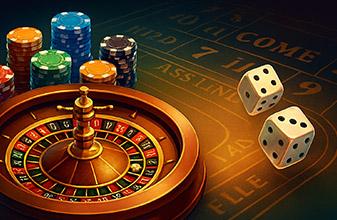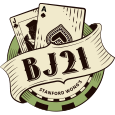Combination of Bad Bets

Casino games tournaments are fun, and they can be profitable too. In these articles, we are publishing a series of excerpts from Stanford Wong’s book, Casino Tournament Strategy.
If you don’t have a positive Expected Value (“EV”), then money management will not make you a winner. Period.
Combination of Bad Bets
A combination of bets, each of which has a negative expectation, must also have a negative expectation. Here is an example. My good friend Dan, who is quite intelligent and regularly beats the casinos at blackjack, told me he had heard about a “winning system” for betting on professional basketball games. He loved the system, and thought it was legitimate because it was based on the premise that home teams have an edge.
Though Dan came to Las Vegas to play blackjack, he intended to bet his basketball system too. Here are the details as he explained them. After a home team has lost, the system says to bet one unit on it the next time it plays at home. If it loses that game, the system says to bet two units on its next home game. Dan confided these details to me because he wanted my advice on what size of bet to use for his unit.
I asked Dan what edge he would have if he made only the first bet; that is, if he bet only on the next home game of teams that had lost a home game. Dan said he thought he would be at a disadvantage on those bets. Then I asked Dan what edge he would have if he made only the second bet, if he bet only on the next home game of teams that had lost two consecutive home games. Dan said he thought he would be at a disadvantage on those bets also. That was enough information for me to be able to tell him his optimal unit bet size: zero.
In spite of Dan’s intelligence, he had convinced himself that he had a system worthy of being called an investment. It took him several minutes of thinking about it to agree that the two-bet combination could not have a positive expected value if each bet individually was a bad bet. You cannot combine two (or more) negative-expectation bets and come up with a positive expectation. If Dan’s system had been any good, either the first bet or the second would have had to have a positive expectation. Or both of them could have had positive expectations when considered individually. But since he admitted that each of them had negative expectations when considered alone, then the combination of them must also have a negative expectation.
But this article is about tournaments on betting horses, not basketball, you say. I used the basketball example hoping that you would understand the point without emotional involvement. The same logic applies to horse bets. If each individual bet in a system has a negative expectation, then the system will lose money. Some horse “systems” involve betting two horses to win per race. If a system is a loser picking one horse per race, then it must be a loser picking two horses per race. Adding a second horse (or a third horse) cannot turn a bad system into a good one.
The only thing a system composed of many bets does is to give you tickets to cash after each race. When you make one $100-to-win bet on a race, you may win but there is a good chance you will lose $100 on that race. If you bet $100 on the race in the form of fifty different $2 bets, the chance of losing the whole $100 shrinks but you are less likely to be a big winner on the race. There is no free lunch here. The average bettor of random horses turns $100 into $80 no matter how the $100 is split up. If you like to cash tickets and don’t mind losing, you too can turn $100 into $80 race after race. And you will still be a loser.
This article is part of a series, to be continued…
Excerpted with permission from Casino Tournament Strategy by Stanford Wong, edited for this format.











Please log in or register to leave a comment